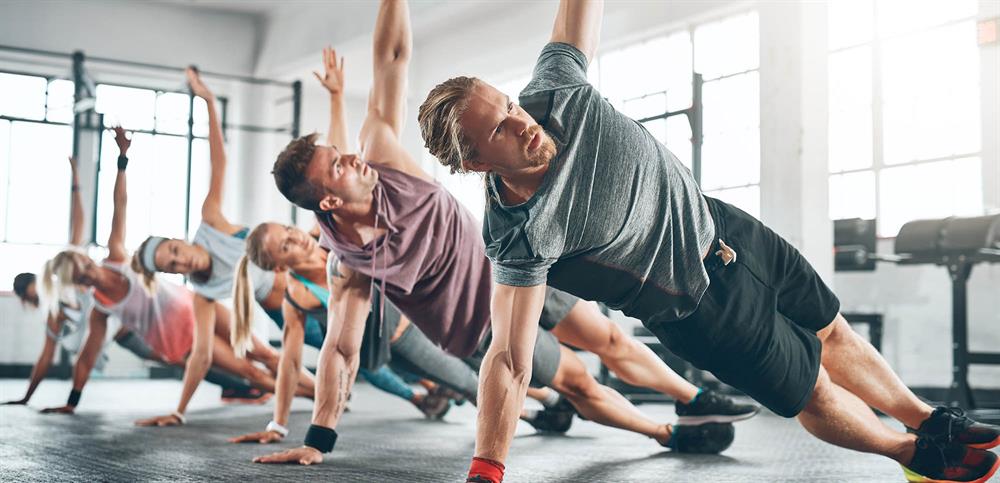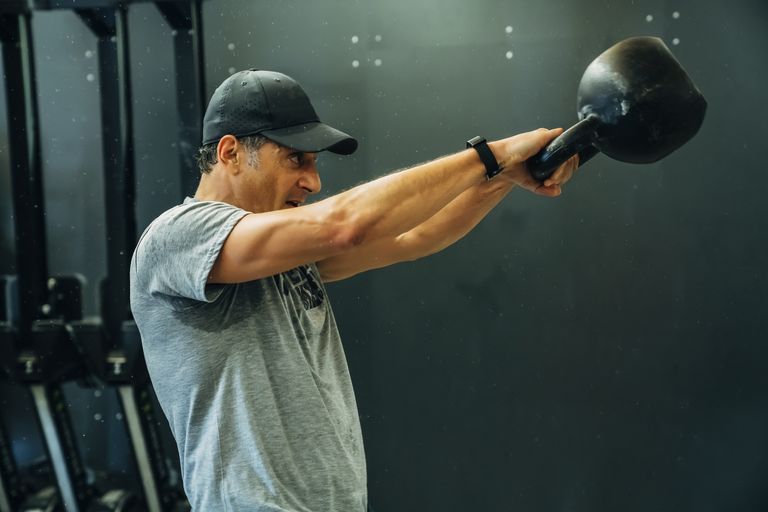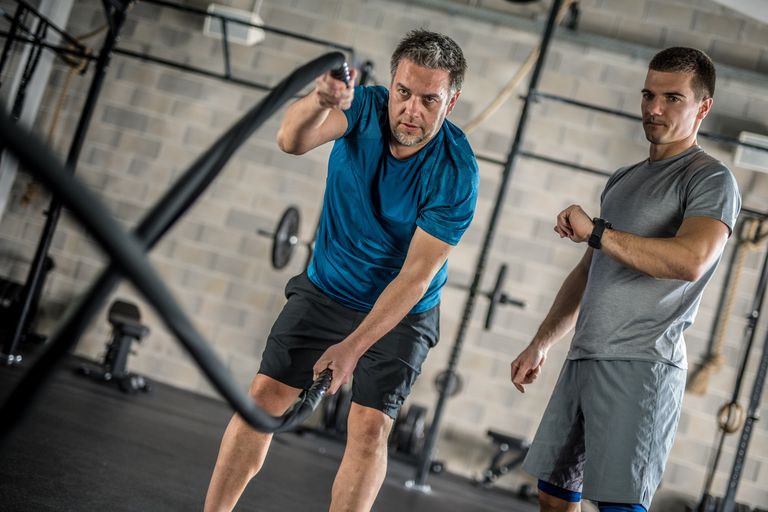What is Circuit Training?
When you think ‘circuit training’, you think ‘high intensity’, however, circuit training should not be confused with HIIT (high-intensity interval training). Though they may seem similar at first, they are far from being the same thing.
As the name implies, circuit training consists of a circuit. And within that circuit, a series of consecutive exercises are performed — usually five to ten exercises. Each exercise is (or at least should be) aimed at targeting a different muscle group. For example, you could start off with an upper-body exercise to a lower-body exercise then back to an upper-body exercise followed by a core exercise, and so on.
The concept behind circuit training is to exercise multiple muscles at the same time with a minimal amount of rest. However, because you’re constantly switching muscle groups, this allows each muscle group to get time to rest and recover.
To illustrate, if you started off doing chest presses and switched over to squats, this will allow your pecs, delts, and triceps to recover to some extent. And when you switch to your next exercise, you’ll allow your quads to recover somewhat, etc. Elevating your heart rate keeps your metabolism roaring as a result of minimal rest. To that effect, you’re reaping the benefits by building muscle and burning fat simultaneously.
When you go from one exercise to the other, you’re triggering a cardiorespiratory response. This means that you can count your circuit workout as cardio.
Circuits are used for a variety of different purposes within a training regime. It could be used to improve overall athleticism, speed & strength, performance in a specific sport, or just overall body composition.
Benefits of Circuit Training

In case you’re not on-board the circuit train, there are a few benefits worth considering.
- If you’re bored with your current workout routine or if traditional training routines bore you, you’ll find that this is a boredom buster. Many gym-goers become distracted in-between sets and start looking at their phones or talk to other gym members. A circuit will lower the chances of these happening quite significantly.
- A circuit focused on strength training will burn approximately 30-percent more calories than your average weight training session will. As a bonus, you’ll get the benefits of a cardio workout too.
- Tying in with the previous point, circuit training will sculpt your physique and incinerate any fat.
Although a circuit may be different than your usual workout, you should know how to effectively set up and plan your routine to reap the full benefits thereof. We know that setting up a program yourself can be a bit daunting. That’s why we’re here. Below, we’ll provide some tips on how to design the best circuit program for yourself.
Set A Time Limit for Your Circuit Training
A circuit is set up around a time limit, and within that time limit, you are supposed to complete a full cycle of every exercise within that limit.
The intensity of the workout will depend on the amount of time available. For example, if you only have 15 minutes to use, then the level of intensity should be high. If you’ve got more time on your hands, say, 45 minutes, then the intensity will be lower. With that said, a circuit should range anywhere between 10 and 45 minutes.
Bear in mind that there shouldn’t be any rest in-between exercises. If you’re constantly alternating between upper body, lower body, and core, you’ll have sufficient time to rest each muscle group. However, you should take a small rest between every successful circuit.
An exercise in each circuit typically lasts for one minute. Within that minute, your goal is to get as many repetitions done as you possibly can. If the weight becomes too heavy, drop it down a notch and continue on.
Choose Your Upper-Body Exercises

To have a successful circuit program means that you’re able to make the best of what you have. If you have a gym membership, then you most certainly have a lot of options to make the best of. If you’re stuck at home, then you still have options, albeit not as vast as a commercial gym.
Let’s say that you decide to do five rounds. You could either choose a different upper body exercise for every round or keep it the same for all five rounds. Though, we would suggest that you mix it up in order to reap the full benefits of circuit training.
Here is an example of upper-body exercises you could do in each round:
Round 1: Machine chest press.
Round 2: Seated pull-downs.
Round 3: Shoulder press.
Round 4: Bicep curls.
Round 5: Tricep push-downs.
Choose Your Lower-Body Exercises

The same rule applies here as it does for selecting your upper-body exercises. These exercises are simply just examples, so feel free to use them or put exercises that you feel would suit you best.
Round 1: Barbell or bodyweight squats.
Round 2: Stationary lunge or walking lunges.
Round 3: Calf raises.
Round 4: Laying or seated hamstring curls.
Round 5: Stiff-legged deadlift.
Choose Your Compound and/or Plyometric Exercises

These are especially good for raising the heart rate and developing strength and agility. Plus, throwing in a plyometric exercise is good for motor skill development. In our selection, we’ve focused more on compound movements, but feel free to swap them out as you see fit.
Round 1: Jumping lunge.
Round 2: Cleans.
Round 3: Kettlebell swings.
Round 4: Thrusters.
Round 5: Deadlifts.
Choose Your Sprint-like Exercises

I know that earlier we said that circuit training is like cardio, so why add actual cardio exercises? Honestly, you can never go wrong with a good sprint, be it running, cycling, or rowing. Research has shown us that high-intensity training (in other words, sprints) has a greater effect on torching body fat than regular cardio-like exercise.
Here are examples of exercises you can perform as sprints:
Round 1: Cycling.
Round 2: Rowing.
Round 3: Running.
Round 4: Jumping rope.
Round 5: Battle ropes.
Rest for 1 Minute
Take this opportunity to recover and reset your mental state while you’re catching your breath. Don’t be afraid to do some mild stretching too.
If you find that you’re unable to catch your breath within the 1-minute mark, then you could increase your rest period by 15-30 second increments. Don’t rest for too long, though. You don’t want to waste the valuable effects of circuit training.




